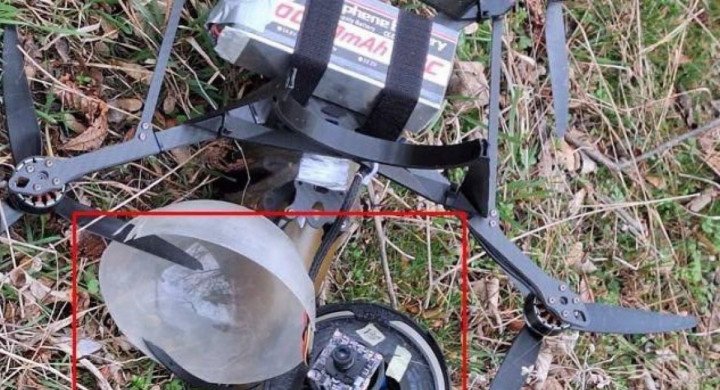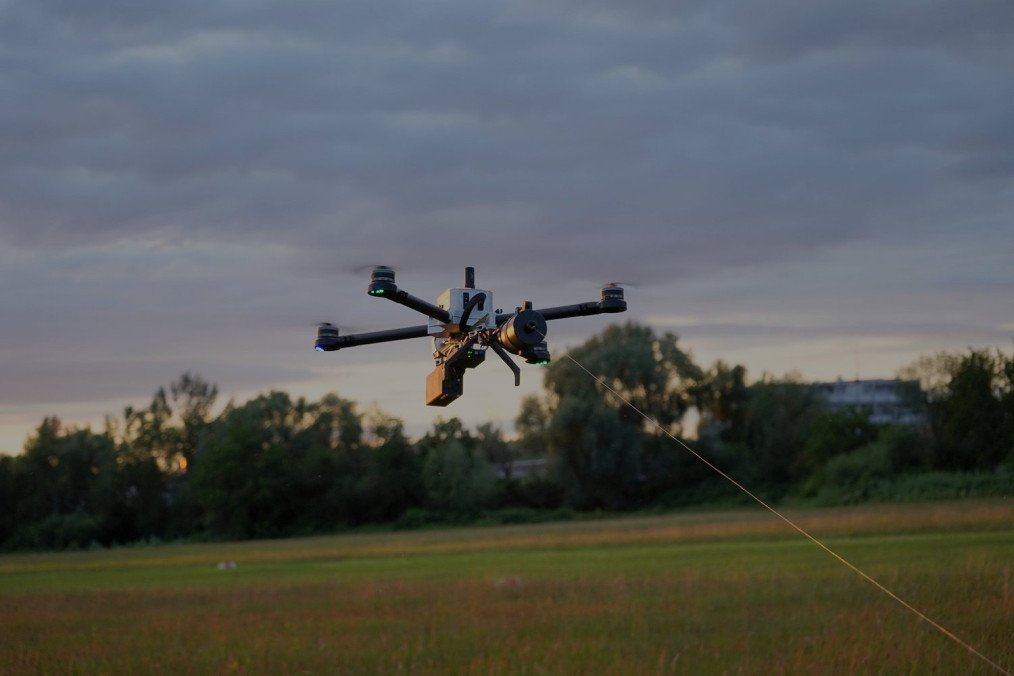Russia has introduced new drone technology in response to Ukraine’s operation in the Kursk region, utilizing drones guided by fiber optics—immune to radio jamming. This marks the first known use of such weapons in combat.
Ukraine’s advance into the Kursk region was facilitated by an electronic warfare blitz, which effectively disabled Russia’s reconnaissance drones and neutralized their FPV drones. The success of Ukraine’s operation in Kursk required extensive preparation, including the identification of all active frequencies and the deployment of sufficient jamming equipment to temporarily neutralize all drones in the area.
The Russian army has been working on innovative technology to overcome the issue of jamming with wire guidance, where the drone deploys a fiber-optic cable as it moves. This method, akin to the wire-guided missiles like the TOW system, allows the transmission of high-resolution video signals without relying on radio frequencies. As a result, fiber-optic drones can effectively counter assaults that depend on electronic warfare to protect armored vehicles.
In March, Ukraine captured a prototype Russian fiber-optic drone, though it appeared to be a one-off. Ukrainian developers have reportedly been working on similar designs, and German company HIGHCAT is set to demonstrate its HMX fiber-optic drone in Ukraine this month.

Combat footage started to appear, suggesting the first operational use of this type of weapon.
On August 12, videos circulated on social media purportedly showing fiber-optic FPV drone attacks on Ukrainian BTR-4 reconnaissance vehicles in Giri. While this cannot be independently verified, the videos exhibit an unusual clarity and absence of interference.
“These screenshots of the Ukrainian BTRs from the point of view of the Russian FPVs at Giri are unprecedented in terms of resolution and clarity,” said Roy, a Twitter/X analyst specializing in Russian weapon systems.
On August 18, the Russian military Telegram channel Siberian Army released another attack video, providing more details. They claim the new fiber-optic drone is named “Prince Vandal of Novgorod,” developed by the Ushkuynik Scientific and Production Center in Novgorod. “The attack video shows higher resolution than usual and no interference, similar to the Russian attack at Giri,” Roy noted.
How the Russian FPV drones "Knyas Vandal of Novgorod" (KVN) deal with the invaders in the Kursk area. This is only for yesterday and the day before yesterday. pic.twitter.com/BYpZsrdVUF
— nofm_geopolitics (@nofmgeopolitics) August 13, 2024
Meanwhile, Skywalker Technology, a company specializing in drone technology, has begun offering fiber-optic drone controllers on the open market. Their latest product is a fiber-optic guidance system designed to replace traditional radio control.
As with other FPV components, often sourced from Far Eastern suppliers, this new technology is likely to be easily available to purchase and deploy to the battlefield in a matter of weeks.
Ukraine officially announced carrying out an operation in the Kursk region on August 12. As of August 20, the Armed Forces control more than 1,260 square kilometers of territory and 93 settlements in the Kursk region of the Russian Federation, according to Commander-in-Chief Oleksandr Syrskyi.
-ba02b3bc86f0b624f99115809a6a34d0.jpg)


-72b63a4e0c8c475ad81fe3eed3f63729.jpeg)



-111f0e5095e02c02446ffed57bfb0ab1.jpeg)